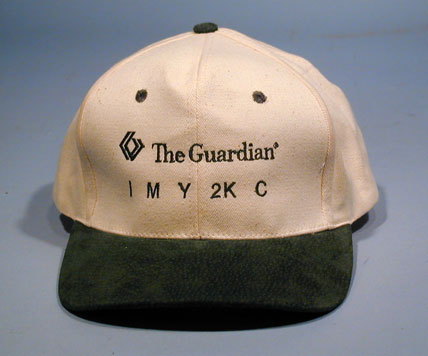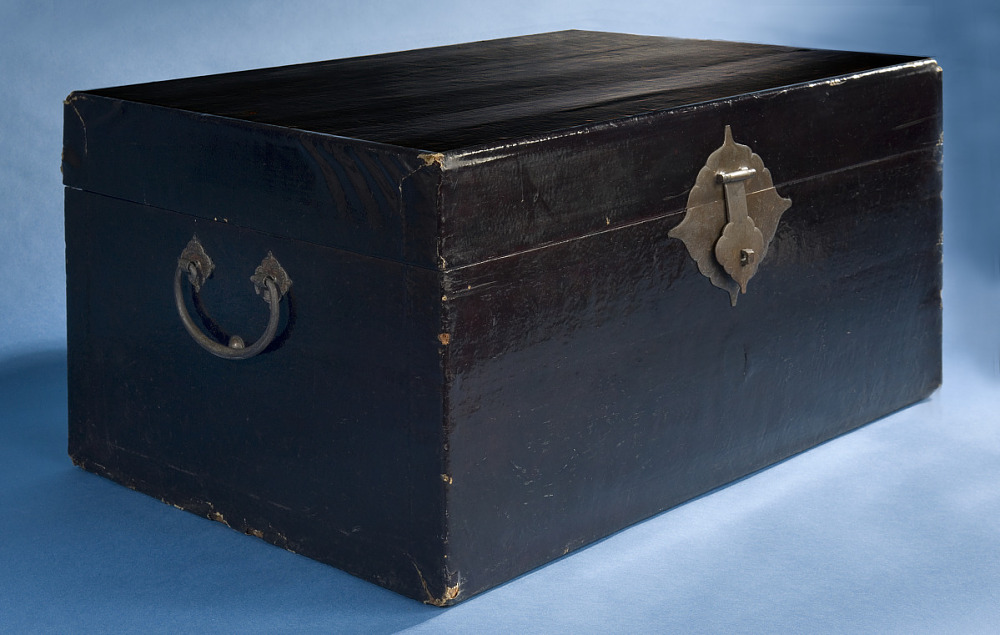As COVID-19 deaths spiked in 2020, Suzanne Firstenberg’s public art installation "In America: How could this happen…"
Museum Artifacts

Grade Range:
K-12
Resource Type(s):
Artifacts, Primary Sources
Date Posted:
11/10/2008
The ENIAC was a large, general-purpose digital computer built to compute ballistics tables for U.S. Army artillery during World War II. Occupying a room 30 feet by 50 feet, ENIAC—the Electrical Numerical Integrator and Computer—weighed 30 tons and used some 18,000 vacuum tubes. It could compu

Grade Range:
K-12
Resource Type(s):
Artifacts, Primary Sources
Date Posted:
11/17/2008
These skates were worn by Phil Verchota (number 27), a member of the underdog 1980 U.S. Olympic hockey team that astounded the world by capturing the Gold Medal at Lake Placid, New York. While it was the win against the Finns that cinched the Gold, the defeat of the Soviet team in the semifinals

Grade Range:
5-12
Resource Type(s):
Artifacts, Primary Sources
Date Posted:
12/28/2010
Soldiers who were held prisoner faced enormous boredom. They would often find debris and use it to make objects to pass the time.

Grade Range:
K-12
Resource Type(s):
Artifacts, Primary Sources
Date Posted:
12/17/2010
Physical Description
White cotton with gunner's mate patch on left sleeve.
Specific History
This jumper or shirt would have been worn by an enlisted seaman.

Grade Range:
K-12
Resource Type(s):
Artifacts, Primary Sources
Date Posted:
9/17/2009
The Spaniards who invaded Mexico brought to North America a well-developed equestrian tradition. Over the centuries, horses, saddles, and other riding paraphernalia were altered by the landscape and the lifestyles of both Spanish and indigenous riders. Accompanied by mariachi music, la charrería

Grade Range:
K-12
Resource Type(s):
Artifacts, Primary Sources
Date Posted:
12/31/2009
In the early days of electronic computers, memory was not as efficient or inexpensive as it is today. To save memory space, programs stored as few digits as possible for dates. In COBOL, for instance, January 1, 1999, was stored as 010199. As Year 2000, or Y2K for short, approached, it became app

Grade Range:
9-12
Resource Type(s):
Artifacts, Primary Sources
Date Posted:
3/22/2012
The individual identified in Japanese characters, here is, Michibiku Ozamoto, or, in English, T. Ozamoto. The numbers 24-4-3 stand for Block 24, Barracks 4, Apartment 3.

Grade Range:
K-12
Resource Type(s):
Artifacts
Date Posted:
4/7/2016
In 1851 Isaac Merritt Singer formed the I.M. Singer & Company (later the Singer Sewing Machine Company) after inventing his own sewing machine to remedy a flaw he noticed with traditional models.
This Singer 24 chain stitch sewing machine was manufactured in 1910, and used in t

Grade Range:
5-12
Resource Type(s):
Artifacts, Primary Sources
Date Posted:
9/2/2020
Demand for inexpensive, mass-produced women’s clothing spurred the rise of early garment factories. The ILGWU was formed in 1900 by bringing together several smaller local unions to fight to end sweatshop production, higher wages, and improve working conditions in the cities where the garment fact

Grade Range:
K-12
Resource Type(s):
Artifacts, Primary Sources
Date Posted:
9/3/2020
In 1906 Ng Shee Lee packed her clothes and belongings in this trunk and left China for America. It was a difficult trip. She slept next to the noisy engine room; arriving tired and sick in San Francisco she was met by the devastating 1906 earthquake. Ng Shee then made her way alone by train across C



















